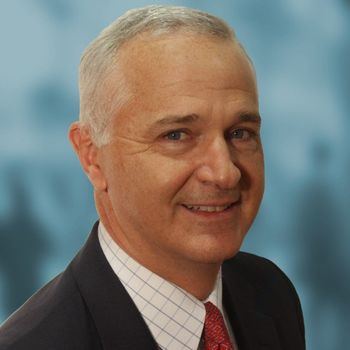
Health care at a crossroads: Addressing workforce demand with innovation and inclusion
As the American population ages and the need for health care grows, physicians aren’t the only clinicians in short supply. Here’s a report on the state of the medical workforce – and how doctors can help.
Physicians and other health care leaders face a persistent challenge in
Contributing factors: health care workforce gap
Two major contributors to the health care workforce gap are the lack of exposure to career options in health care and employee burnout in health care workers. Research from
But it’s not just about getting more individuals to enter the health care field; there is also work to do on retaining health care workers. According to research published by
Beyond nursing: lesser-known, in-demand health care professions
While much attention is paid to nursing shortages, less attention has been paid to addressing critical demand in other areas of health care that impact physicians and nurses, straining resources.
Positions in medical assisting, respiratory care, and surgical technology, for example, are in particularly high demand. These lesser-known skilled trades in health care are experiencing strong, growing demand. According to the Bureau of Labor Statistics (BLS), total employment for
Nationally, total employment in
Demand for
These lesser-known skilled positions in health care offer in-demand jobs and shorter pathways to the workforce. Students can prepare for respiratory therapy and surgical technology careers through an associate degree. Medical assisting programs offer a short diploma pathway, or an associate degree option. For many students, finding programs that will directly prepare them with skills for their careers is priority. If we educate students on their full range of options beyond four-year bachelor’s degrees, we can help more high school students go on to meaningful, in-demand careers. These skilled health care professions can also allow mid-career professionals to upskill or switch fields without having to go back for a four-year degree. Educating more people about the full range of health care careers can open possibilities for young graduates and mid-career workers who are looking to change or advance their careers.
Nurses in high demand: exploring solutions to a growing crisis
According to
Strategic planning to address this shortage includes reimagining pathways into nursing and increasing the practical nursing (or vocational nursing, depending on the state) option as an efficient path into nursing. These programs can move graduates into the nursing profession quickly, alleviating labor shortages and creating brighter futures for graduates.
Licensed practical nurses (LPNs) and licensed vocational nurses (LVNs) can practice with a diploma and licensure. This provides a solution to both the nursing shortage and a gateway for more diverse individuals to enter the health care workforce.
Strategies for increasing diversity in health care
Improving diversity in the health care profession contributes to better patient outcomes for underrepresented populations. It’s encouraging to see the growing commitment to diversifying the workforce and keeping that momentum going is important. Black, Latinx, and Indigenous Americans are particularly underrepresented in health care. In 2022,
Currently, there are significant racial disparities in patient care. Health policy analyst
Sustained diversity in the health care workforce is vital for providing the best possible patient experiences and outcomes. For minority patient populations, a lack of diversity in the health care workforce is a factor that contributes to poorer health outcomes and higher mortality rates according to the
Addressing barriers to entering health care careers will help improve diversity. Educational institutions can address this in several ways, starting with diversifying representation among faculty and staff. As reported by
How physicians can help
Physicians can step in to create a more diverse medical field by aligning the missions of medical institutions, from hospitals to private practices, with inclusion and equitable access to health care – providing inclusivity training, helping to remove barriers, and creating positive, welcoming workplace cultures – can help to improve diversity and strengthen the health care workforce.
Physicians can also advocate for increased diversity in health care by supporting policy that underscores representation and removes barriers. This amplifies efforts led by other health care professions, leading to more powerful outcomes.
A health care workforce built for the future
We have an incredible opportunity and responsibility to strengthen the health care workforce. By increasing the number of health care professionals entering the profession, improving diversity, and focusing on retaining our new health care workers, we can support better patient care. It’s also time to step up efforts to educate young people about the full range of career opportunities in health care. By exposing more students to health care careers, we can bring a new generation of untapped talent into the health care workforce.
Marlo Robinson, DNP, JD, RN, is the national dean of nursing for Concorde Career Colleges, a division of Universal Technical Institute Inc. At Concorde, she oversees 13 nursing programs nationwide. She was recently appointed as the National League for Nursing consultant to the National Student Nurses’ Association. She also is the founder and owner of Mother's Care Doula Services, which serves as a full-service birth, postpartum and childbirth education provider in South Florida.As a licensed attorney, she is an active member of the Florida Bar.
Newsletter
Stay informed and empowered with Medical Economics enewsletter, delivering expert insights, financial strategies, practice management tips and technology trends — tailored for today’s physicians.








